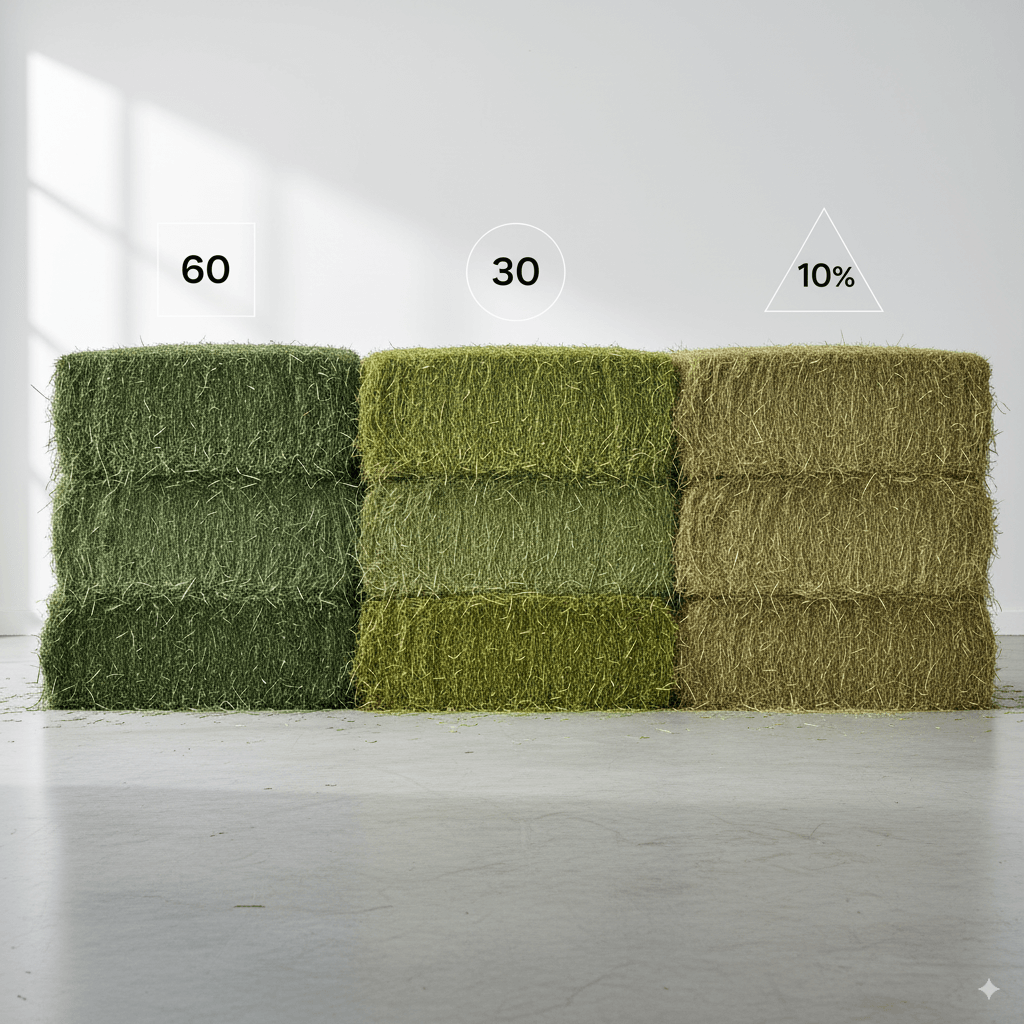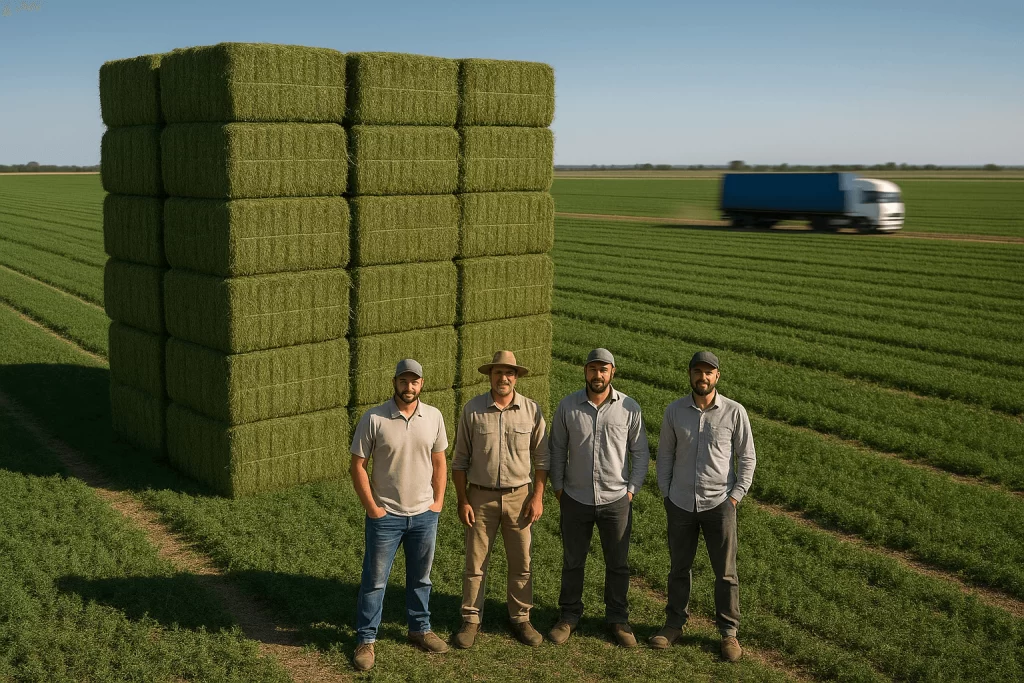Buyers across the Gulf are competing in real time with China (volume) and Saudi Arabia (strategic priority) for A-grade cuts. When logistics windows and price line up, top lots get booked fast. Over-reliance on a single origin magnifies risk: if that origin tightens or turns uncompetitive, premium disappears and margins erode.
iBridge Capital recommends
- Multi-window programming across hemispheres.
- Contract quality specifications (protein, NDF/ADF, ash) with tolerances and clear bonus/penalty schemes.
- Short hold options (7–10 days) to secure critical lots during bidding pressure.
Market note (non-commercial): recent observations show FOB ~USD 340–370/ton for Good alfalfa of excellent quality. Treat this purely as a reference.
Two shortage triggers you can’t ignore: tariffs and water
Tariffs. Adjustments between major blocs can turn a key origin uncompetitive in days. In 2025, tariff shocks reshaped delivered pricing and access to top cuts on several lanes.
Water. Water regulation and drought in producing regions (e.g., parts of the U.S. Southwest) restrict exportable supply and lift costs. Building a plan around one or two geographic clusters raises operational risk.
How to protect the P&L
- Tariff adjustment clauses and pre-defined re-pricing mechanics.
- Signed back-ups in ≥2 countries, callable in <48 hours.
- Pre-audited alternate routes to avoid rollovers and timing slips.
Viable competitors to the U.S.: when each origin fits
When the U.S. tightens or prices out, Spain, Australia, Egypt, and Romania help sustain protein and continuity. None is a perfect substitute; allocate by target ration, lead times, and climate/logistics volatility.
- Spain: consistent quality and proximity to the Gulf; strong for A-grade in tight windows.
- Australia (alfalfa and/or oaten): steady quality; watch seasonality and ocean capacity.
- Egypt: proximity and flexibility; requires strict lot-level QC.
- Romania: complementary window; often compelling “quality-to-cost” for blends.
Always check (no table needed)
- Lot-level protein minimums, NDF/ADF, ash, and moisture.
- Historical stability (variance) by origin.
- Transit time to Jebel Ali/Dammam and logistics reliability.
- Cut/season window and climate risks.
From single-supplier to a multi-origin portfolio
The goal isn’t “buy from many”—it’s designing resilience.
Operational playbook
- 60/30/10 allocation: 60% anchor origin; 30% mirror contract in a second origin; 10% option with locked specs.
- Contract clauses:
- Origin substitution to like-for-like specs.
- Protein bands with transparent bonuses/penalties.
- Regulatory trigger (tariff/water) to re-quote or switch origin.
- Staggered sailings (alternate fortnights) to avoid single-cut dependence.
- Distributed QC: independent inspection and lot sampling at each origin.
- Pre-approved scenarios (A/B/C) so execution is tactical, not bureaucratic.
Alfalfa vs oaten hay: blending to protect protein and margin
When A-grade prices spike or supply tightens, blends with oaten hay stabilize protein, digestibility, and cost. Negotiate against a target ration, not per-bale, and maintain traceability (lot analyses) to adjust precisely.
When blending makes sense
- Temporary shortfalls in available protein.
- Premiums on A-grade compressing margin.
- Transitions between harvests/hemispheres.
Early-warning radar (monthly checklist)
- Tariffs/sanctions relevant to forage.
- Hydrology/regulation in critical producing zones.
- Freight and congestion on Gulf lanes.
- Harvest status by origin (cut moisture, yields).
- Large-buyer tenders that could block capacity in your window.
- Internal readiness: live mirror contracts and valid approvals.
What to do when an origin “drops”
- Tariff shock → trigger mirror contract in Origin B at equivalent specs; hold the target ration.
- Water restriction → activate contingency option (10–15%) and run a temporary blend without losing milk yield.
- Logistics disruption → switch to the pre-audited route/port alternative.
Conclusion
To compete with China and Saudi Arabia for premium alfalfa, advantage comes from multi-origin programming, substitution-ready contracts, and disciplined monitoring. Experience from 2025 confirms that single-supplier dependence risks quality loss and margin compression. A 60/30/10 portfolio, with lot-level QC and clear triggers, reduces exposure and improves operational continuity.





